Contents
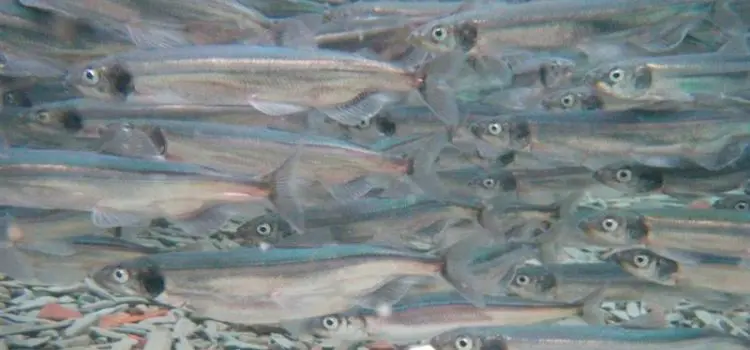
It’s hard to even imagine that such a small fish (comparatively) is a predatory marine fish. The capelin belongs to the class “ray-finned fish”, to the order of smelt-like fishes, to the family “smelt” and to the genus “capelin” of the same name.
This fish received the name “capelin” a long time ago, and this name comes from the language of the Karelian-Finnish group. In Karelian “maima” and in Finnish “maiva”, which means a small fish that served as bait to catch more serious fish, such as cod. In the Finnish language, the word “maiva” meant a young whitefish.
This small fish is also called the “chaplain” fish, in English.
Capelin: description
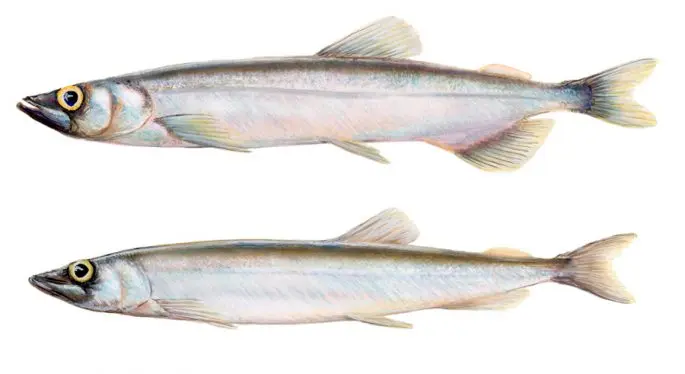
The body of this fish is elongated and streamlined, as well as flattened laterally. It can grow up to 25 cm in length, gaining a weight of just over 50 grams. Small scales are located along the entire lateral line, as well as on both sides of the abdomen, including on the back and sides of the fish. The capelin’s head is not large, while the mouth is large enough, as for such head sizes. The maxillary bones practically reach the middle projection of the eyes. Capelin’s teeth, although small, are well developed.
Capelin is easy to identify by the black border that marks its fins. The pectoral fins of the fish are quite large, as are the dorsal fins, which are significantly shifted towards the tail. The back of the fish is distinguished by a greenish-white tint, while the sides and abdomen have a silvery-white tint with a sheen and small patches of brown.
Males and females have characteristic differences: males are slightly larger and have a sharper muzzle. In addition, males have much longer fins. Moreover, before the process of spawning, on both sides of the abdomen, they form large hair-like scales, similar to rollers and creating the appearance of a bristly surface. This small fish lives no more than 10 years.
Types of capelin
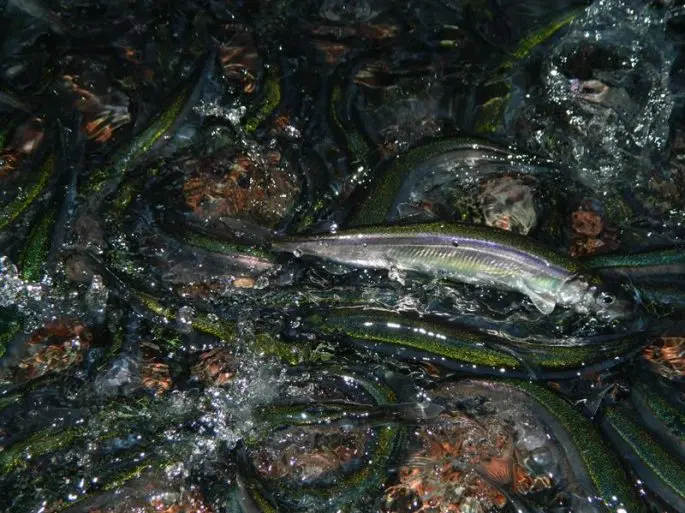
According to experts, capelin fish has only 2 subspecies, which differ in habitats. For example:
- Capelin Atlantic.
- Capelin Pacific.
Where does capelin live?
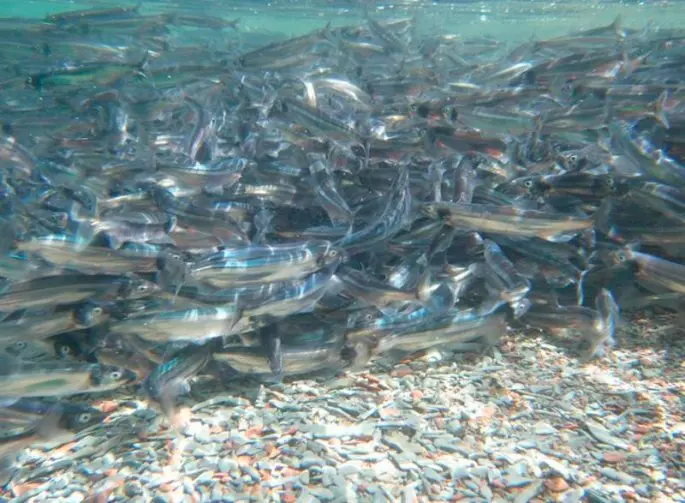
This small fish prefers to be at depths of up to 300 meters, although sometimes it descends to depths of up to 700 meters. However, it never enters rivers and other bodies of fresh water. As a rule, she prefers to be constantly in the open sea, approaching the coastline only during the spawning season.
From the name of the subspecies, it is easy to understand that the Atlantic capelin inhabits the waters of the Atlantic Ocean, but at the same time it is also found in the waters of the Arctic Ocean, in the Davis Strait, in Labrador, in the cold waters of Norway, and also within Greenland. Capelin is also found in other northern seas such as the Kara, White, Chukchi, Laptev and Barents Seas.
Pacific capelin is distributed over a vast area of the northern part of the Pacific Ocean, up to the coast of Korea and about. Vancouver, which is very close to Canada. Numerous populations feel good in the waters of such seas as the Bering Sea, the Sea of Japan and the Sea of Okhotsk.
What does capelin eat?
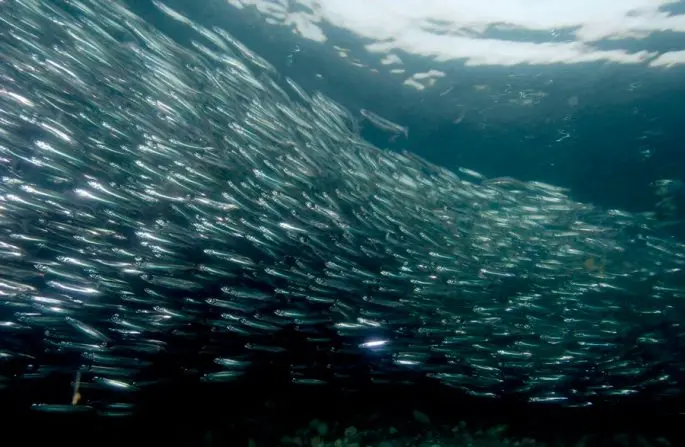
Fish capelin or uyok, as it is also called, is a representative of the smelt family, therefore it is a predator, while feeding on living organisms. The basis of her diet consists of the same food objects, due to which the herring lives. As a rule, these are zooplankton, shrimp larvae, as well as eggs of other fish species.
At the same time, capelin consumes small crustaceans, as well as various marine worms. Capelin feeds constantly and does not stop doing so even in the dead of winter.
How capelin is caught in the USA Fishing in the USA February 2016
Capelin spawning

Depending on the habitat, the spawning process of capelin occurs at different periods. Numerous shoals of this small fish that roam the western waters of the Pacific and Atlantic oceans spawn throughout spring and summer, and the fish that prefers to live in the eastern waters of the Atlantic continue to spawn in autumn. The inhabitants of the eastern waters of the Pacific Ocean spawn during 3 autumn months.
Before you go to spawn, not a big fish gets into numerous shoals. Birds, seals, flocks of cod, as well as whales accompany these giant shoals all the way, as capelin is included in their diet. When these flocks get into a storm, a lot of spawning capelin is often thrown ashore and the coast is literally covered with a thick layer of fish.
To spawn, fish need to find shallow areas of the water area with a sandy bottom, although some shoals choose deeper areas. For the normal course of caviar development, a sufficient concentration of oxygen must be present in the water, and its temperature should not exceed +2,5 degrees. For the reliability of fertilization of eggs, each female is accompanied by 2 males, who make a recess in the bottom with their tails, after which the female lays eggs in this recess. The maximum size of the eggs is a little more than 1 mm, while they are quite sticky and adhere reliably to the base.
Depending on the age and living conditions, the female is able to lay from 6 to 40 thousand eggs. After spawning, the fish returns to their usual habitats. Some individuals go to spawn a second time, although many of the individuals, after the spawning process, do not survive when they return: there are too many predators that do not mind eating capelin.
After a maximum of a month, larvae appear from the eggs, about 5 mm in size. After birth, their waves carry them into the open ocean, where the larvae develop. Before the onset of autumn, capelin fry grow up to 4 cm in length. After a year, females can take part in spawning, while males are ready for this process after about 1 year and 3 months.
Useful properties of capelin and contraindications
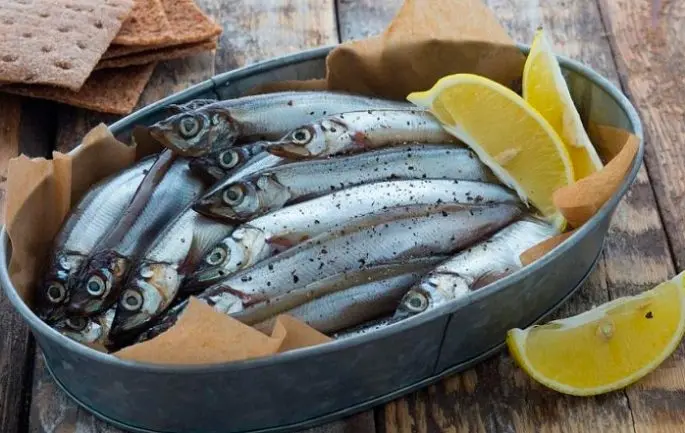
This small fish is caught in large volumes, about 500 thousand tons per year. This is due to the fact that the fish has unique nutritional and taste characteristics.
Firstly, it is a low-calorie product, which makes capelin indispensable for preparing all kinds of dietary dishes. Capelin meat contains up to 23% proteins, which are easily absorbed by the human body. Since the fish is small, it takes a minimum of time to cook it, and the less time it takes to heat treat, the more nutrients remain in the meat. Capelin is considered to be a fairly healthy fish, which contains polyunsaturated fatty acids that can lower blood cholesterol levels, which means that there will be less deposits in the vessels. This effect has a positive effect on the functioning of the cardiovascular system, which will help prevent the occurrence of heart attacks and strokes, as well as prevent other heart diseases.
Capelin meat contains a whole set of vitamins of groups “A” and “B”, “D”, etc., as well as minerals. For example:
- The presence of iodine has a beneficial effect on thyroid function.
- The presence of phosphorus stimulates the central nervous system, preventing dementia.
- Capelin meat contains sodium.
- As well as potassium and other components.
This is one of the few seafood that stimulates the production of insulin, which leads to a decrease in blood sugar levels. This factor is decisive for the preparation of dishes for diabetics.
Naturally, not all people can eat uk fish, this is especially true for people who have a personal intolerance to seafood. You should also not get carried away with smoked capelin, especially for those who have problems with the digestive tract. In addition, smoked capelin (and other smoked fish) contain carcinogens that can cause the appearance of malignant neoplasms.
Capelin. About the great benefits of a small fish
What else is interesting about capelin
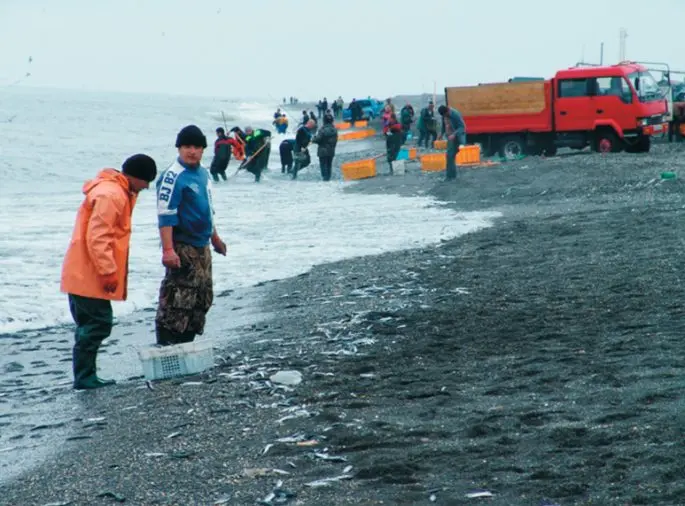
Many interesting facts are known about capelin fish (fish uyok). For example:
- Huge bird colonies on the Kola Peninsula exist only due to the fact that there are a sufficient number of this fish in coastal waters.
- At the beginning of June, it is enough for residents of some provinces of Canada to go ashore to take a certain amount of capelin for themselves in order to cook it for breakfast, lunch or dinner.
- Residents of Murmansk celebrate the holiday of capelin with the advent of spring. During this period, you can not only try various dishes at the holiday, but also stock up on fish for future use, and at a very low cost.
Capelin fish, like most seafood, is distinguished by the fact that it occupies a significant place in the human food chain. It is necessary to consume fish regularly, as experts insist, since it is necessary to constantly replenish the lack of vitamins and microelements, especially since they are in fish in a form accessible to humans. Despite the insignificant energy value, fish is able to ensure the normal functioning of all internal organs for a person, which is important. Regular consumption of seafood can slow down the aging process, rejuvenate the skin, strengthen bones, teeth and hair, normalize metabolic processes in the body, which leads to a decrease in body weight. In other words, this is the product without which a person is subject to a lot of negative consequences.









